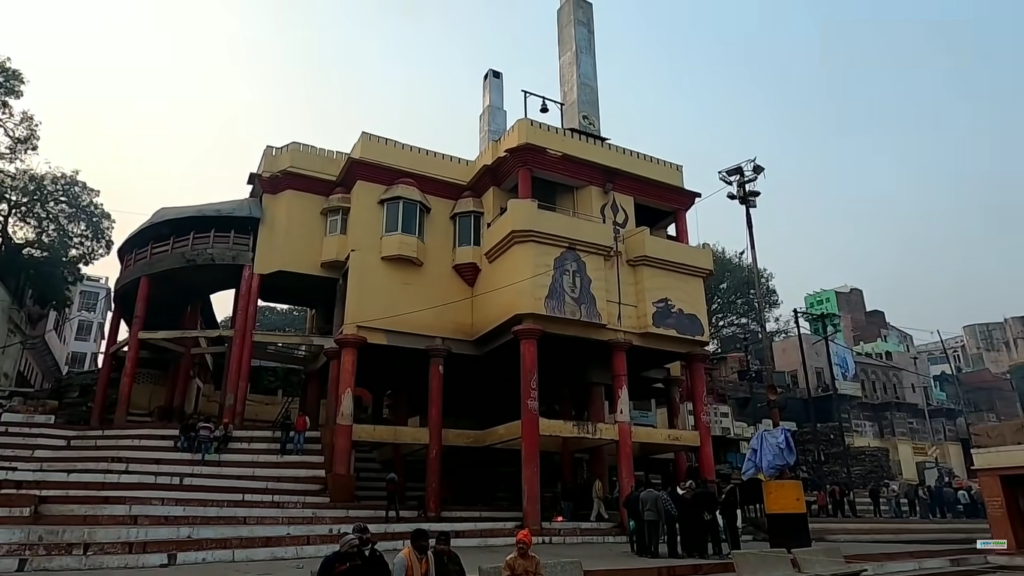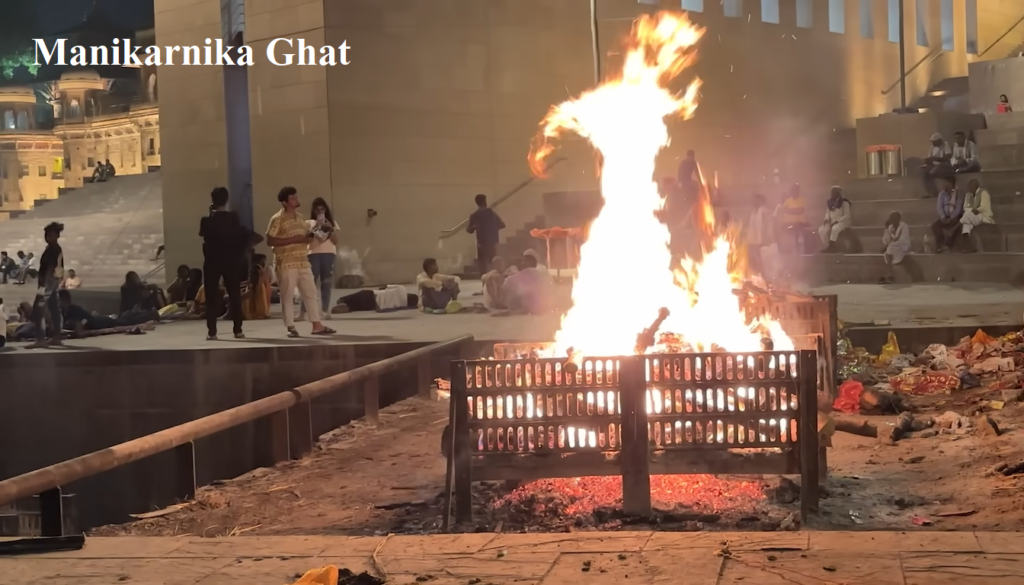Varanasi is one of the oldest cities in India. It is one of the seven holy cities of the Hindu religion, and is considered the spiritual capital of India. Varanasi is of immense significance to those of the Hindu faith, with many pilgrims coming to pray, perform rituals, and bath in the River Ganges. When one hears of the bustling city of Varanasi, the first thing that comes to mind is the river Ganges. This venerable river has served as a lifeline in the city throughout the centuries, giving rise to innumerable famous ghats or sites of spiritual practice. Two of the most famous and unique ghats in Varanasi are the Manikarnika and Harishchandra Ghat. Unlike other ghats these ghats are famous for performing cremation activities. Visiting these ghats will give you another kind of satisfaction and peace.
Harishchandra Ghat
This is the second ghat where cremation activities take place. Because of this, this ghat is called Adi Manikarnika. Harishchandra Ghat, is one of the oldest and most reowned ghats in Varanasi. It is named after King Harishchandra, a legendary king from the Ramayana, and a famous man of truth. According to the legend, King Harishchandra arrived here to stand as proof of his truth. Due to its historical significance, Harichandra Ghat is visited by many Hindu devotees and curious tourists.

At the bottom of the steps that lead to the holy River Ganga, there are boats waiting to take people across. One can see the smoke rising with seriousness and mixes with the air above. Everything in the scene reminds you of your own mortality and the shortness of life.
Hindus from far away bring the dead bodies of their loved ones to this ghat to be burned. In Hindu mythology, it is said that a person who has his or her last rites done here gets moksha, which means salvation. On the side of a ghat is a beautiful temple with statues of Harishchandra, Vriddha Kedara, and Adi Manikanteshwra.
Associated History
The ghat was given its name in honor of the legendary King Harish Chandra, who is said to have served as a servant at this ghat in the past in order to preserve both truth and reality. Because of the good deed that the King did, the god gave him back his lost throne and his dead son. But in the late 1980s, an electric cremation was built here, which gave the ghat a more modern look.
Manikarnika Ghat
Manikarnika Ghat, also known as Manikarni Ghat or simply Manikarni, is the primary and oldest ghats in Varanasi. The ghat is not just a crematorium, but also a symbolic gateway to the afterlife. It is believed that the souls will find peace and moksha if the last rites are done here. In ancient times, saints and kings used to cremate their dead bodies at this ghat. Today, it is mainly used for mass cremations and to attend the sad moments of death.

The Manikarnika Ghat is unique because all the Hindu castes are treated equally here. It is believed that social discrimination is eradicated here; people of different religion, class, caste, gender, and creed come together to pay their last respects to the dead, thus transcending the boundaries of the human. The priests of Manikarnika Ghat are known as Dom Raj. They have their own rituals and tradition. People from all over the world visit Manikarnika Ghat to witness the religious rituals and spiritual enlightenment.
Tourists are also drawn to the site and the area is filled with people from almost every corner of the world. Due to its scenic beauty, grandeur and historical significance, Manikarnika Ghat is one of the most spectacular places of Varanasi. It is a place that has witnessed many rituals and ceremonies over centuries, and is one of the most visited sites in the city.
Associated History
Manikarnika Ghat is one of the most important cremation ghats in Varanasi and is believed to have been built by Lord Shiva himself. People have a strong belief that while Shiva and Parvati were looking at Chakrapushkarni, the gem that was in Parvati’s ear accidentally dropped into the pond. It was called Manikarnika because Parvati’s ear gem fell out of it. Manikarnika means earring in Sanskrit. Since she couldn’t find the ring, she put a curse on the ghat that made the death pyres burn forever and always.
Manikarnika Ghat vs Harishchandra Ghat
Manikarnika Ghat and Harishchandra Ghat are both important ghats situated along the banks of the sacred River Ganges in Varanasi, Uttar Pradesh. Manikarnika Ghat has a greater significance than Harishchandra Ghat, and it is considered to be one of the holiest sites in Varanasi. Harishchandra ghat is located between Hanuman ghat and Lali ghat whereas Manikarnika ghat is situated between Lalita ghat and scindia ghat.
The Manikarnika ghat has mythological connection while the Harishchandra ghat is connected historically with the city of Banaras. Everyday, about 350 bodies are burned at Manikarnika ghat, and sometimes that number goes as high as 600. However, on an auspicious day, 20 to 25 dead bodies are burned at the Harishchandra ghat. The Harishchandra ghat is popular among local people of Varanasi whereas Manikarnika ghat is renowned globally. People from distant places wish to be cremated at Manikarnika for attaining Moksha.
People in Varanasi think that the Manikarnika Ghat is older than the Harishchandra Ghat. But the significance of Harishchandra Ghat is not less than Manikarnika ghat and that’s why it is often called the “Original Manikarnika” or “Adi Manikarnika.” The famous Manikarnika Ghat is a lot bigger and busier than the less-known Harishchandra Ghat. In Harishchandra ghat, the modern facility of electric crematorium is available but in Manikarnika ghat, traditional method of cremation is followed.
Cremation Ghat Varanasi is the ideal spot for Hindus to offer their last respects to their loved ones. It is an awe-inspiring experience to witness a cremation ceremony at the Ghat and to participate in an experience that is unique in its own way.
